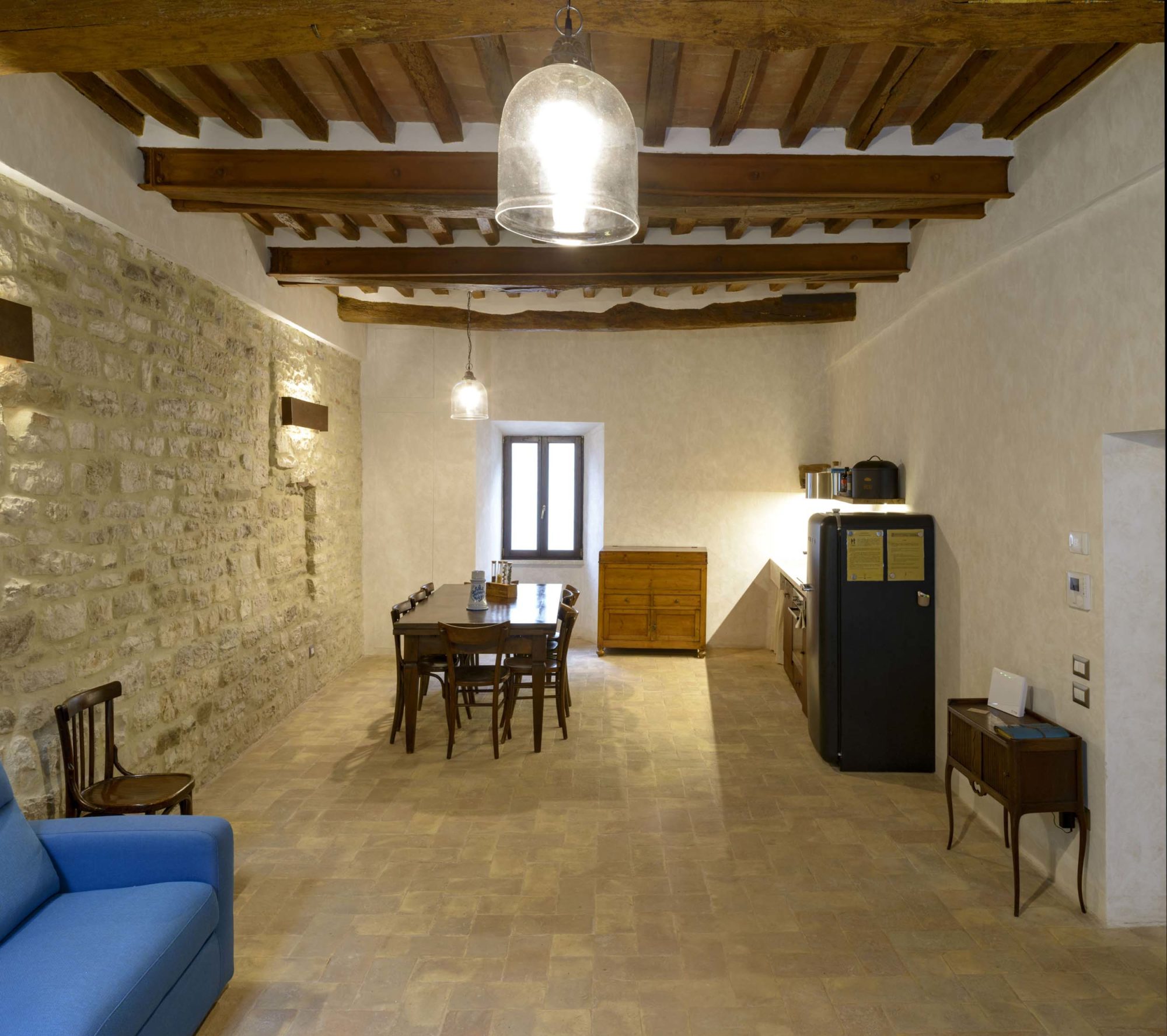Un giro nei dintorni (English translation below)
L’immobile è posto in uno dei luoghi più suggestivi della città, da cui si può ammirare il superbo panorama della gola stretta e tortuosa del “Bottaccione”, tra le scoscese pareti del monte Foce e monte Ingino, a cui si aggrappano l’”acquedotto medievale” e il trecentesco eremo di Sant’Ambrogio.
Accanto alla casa scorre il torrente Camignano, che attraversa Gubbio ed il cui argine funge da margine del caratteristico quartiere di San Martino.
Dalle finestre della casa si può ammirare la chiesa di Santa Croce della Foce, del XIII sec., da cui si accede da una stradicciola al lato dell’edificio. La Chiesa, molto cara al popolo eugubino, è purtroppo completamente inagibile attualmente, ma sono in corso i lavori di restauro. Uscendo da casa e attraversando la Porta Metauro (l’unica a Gubbio ancora con l’antico portone in legno), vi immergerete subito nei vicoletti medioevali della città, abbelliti dai fiori o dagli stendardi per la festa dei Ceri. Durante le feste natalizie, il quartire San Martino fa’ da sfondo all’omonimo presepe, allestito con grande cura in tutte le vie e sul greto del torrente. Scendendo per la Via del Camignano ammirerete le case trecentesche affacciate al fiume e che vi porterà fino a P.zza Quaranta Martiri e la grande Chiesa di San Francesco. Adiacente la porta Metauro, c’è anche l’ingresso del Parco Ranghiasci. Percorrendo la sua pittoresca passeggiata potrete ammirare Gubbio da angolature inedite di innegabile bellezza.
Percorrendo invece via Gabrielli, costeggerete il Palazzo del Popolo, ai cui piedi è incassato il “pietrone”, rappresentazione dello schema del templum iguvino.
Passata la fonte di San Verecondo, arriverete alla piazza principale del quartiere san Martino, P.zza Giordano Bruno. Salendo a sinistra arriverete alla Fontana del Bergello, dove potreste prendere la “patente dei matti” e raggiungere poi P.zza Grande, il centro della città.
Perdetevi tra le viuzze, troverete scorci uno più bello dell’altro!
Vi consiglio di visitare anche l’acquedotto del Bottaccione o Condotto, costruito nel 1300, abbarbicato sul monte Ingino e che nel medioevo portava l’acqua corrente alle fonti pubbliche, al Palazzo Ducale e all’ultimo pino del Palazzo dei Consoli, una vera rarità per l’epoca!
Percorrendolo avrete una visuale diversa e affascinante della città.
L’appartamento è anche ubicato all’inizio dell’arteria che collegava Gubbio alla strada consolare Flaminia, che conduceva e ai centri di maggiore spiritualità del periodo romano e del periodo medioevale al Tempio di Giove Pennino, alle grandi Abbazie di Santa Maria di Sitria, di S.Croce di Fonte Avellana, di S. Emiliano in Congiuntoli, di S.Girolamo di Monte Cucco e di S. Croce di Sassoferrato.
Gubbio è piena di chiese, palazzi e scorci mozzafiato.
Per non parlare delle specialità culinarie!
Insomma, ne avrete di cose da fare e vedere!
Di seguito un breve filmato del percorso dell’aquedotto di Gubbio
Adatto a tutti.
